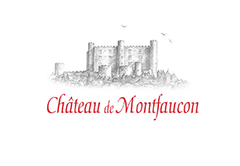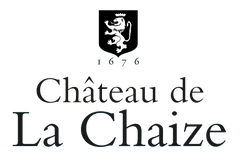- White Wine
- Chardonnay, Grenache Blanc, Marsanne, Picpoul, Pinot Noir
- Dry
- Medium Bodied
- 750ml
About the Winery
Château de Montfaucon

Just across the Rhone river from the beautiful vineyards of Chateauneuf-du-Pape, the Lirac appellation extends itself on the low hills alongside the river. The history of Château de Montfaucon dates back to the 11th century when the castle's first tower was built. The castle's role in history was strategic; the Rhône River was the border between the French Kingdom and the Holy Roman German Empire. Montfaucon was one of many castles and fortresses along the Rhône River constructed to guard the border.
Rodolphe de Pins took over the family estate of Montfaucon in 1995 and subsequently rebuilt the winery and began practicing sustainable agriculture. He honed his winemaking skills in Barossa at Henschke and Vieux Telegraphe in Châteauneuf du Pape before returning to Lirac, so needless to say, his familiarity with the local varieties is well established.
Claude Riffault

Stéphane Riffault, son of Claude Riffault, has become one of the most sought-after producers in the region. He took over the management of the domaine at a young age and his top Sancerre wines quickly became the envy of some of the region's most established vintners.
Stéphane's Sancerre bottlings come from 33 different parcels in 8 different lieu-dits spread across 4 villages on limestone soils. Having studied and worked in Burgundy, and then trained with some of best – Olivier Leflaive (Burgundy), Château Angélus (Bordeaux), and his very own father, Claude Riffault – it’s easy to see the Burgundian influence and the master of minerality in Stéphane’s wines.
When his father retired, Stéphane took over the winery and embarked upon a journey of viticultural transformation. Today, all 13.5 hectares are certified organic (ECOCERT, 2016) and biodynamic (BIODYVIN, 2021). The entire harvest is carried out by hand and an extensive sorting takes place before the grapes are crushed –– a testament to his craftsmanship and an unwavering commitment to sustainability.
Domaine du Château de La Chaize

Château de La Chaize is among the oldest, most historic estates in Burgundy’s Beaujolais region. Cared for by the same family for nearly three and a half centuries, the estate has been passed on to new owners, the Gruy family, who are equally committed to managing the estate with the utmost care, while implementing an ambitious environmental plan. Among the many initiatives is the conversion of all vineyards to organic farming, the adoption of precision viticulture, reducing carbon their carbon footprint, and recycling every by-product from viti- and vinicultural activity, to achieve zero waste.
Founded in 1670 by the seneschal of Lyon François de la Chaize d’Aix, the main Château de la Chaize building and gardens were completed by Jules-Hardouin Mansart and André le Nôtre, respectively architect and gardener of the Château de Versailles. Château de la Chaize is among the oldest, most historic estates in Burgundy’s Beaujolais region. Boasting over 250 acres of vineyards, it is also one of the largest. It is today considered one of the most innovative estates in Burgundy. Among its forward- thinking practices is the adoption of eco-friendly farming techniques, commonly referred to as Agriculture Raisonnée. Chemical treatments have been reduced to a strict minimum, for example, and the growing of grass between rows has been re-introduced to enrich the soil and reduce erosion.


